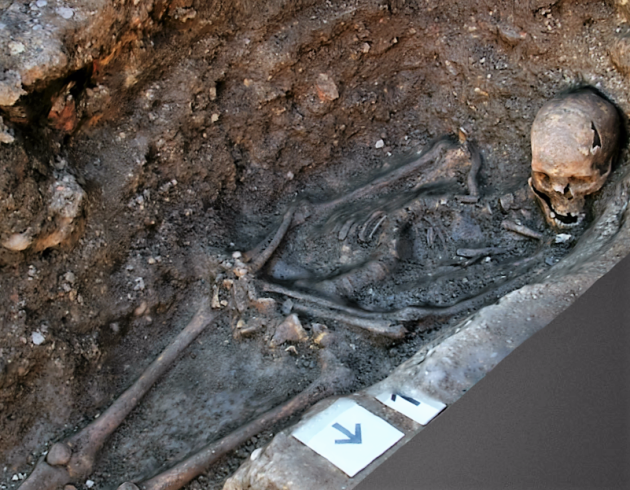
One year after King Richard III’s remains were reburied, the much-maligned monarch’s skeleton has been exposed once again – this time, in virtual reality.
Internet users can zoom in on the 15th-century remains as they were found in 2012, lying beneath a parking lot in the English city of Leicester. You can change your virtual camera angle on the scene, and get a guided tour by clicking on numbered points of interest.
The virtual reconstruction takes advantage of a photogrammetry program called Agisoft Photoscan and a 3-D sharing platform called Sketchfab – but most of the credit goes to the University of Leicester researchers who snapped so many pictures of the site before the bones were removed.
“During the excavation in 2012 we took photographs of the skeleton from multiple angles to create a lasting record of how the king’s bones were positioned in the grave before we exhumed them,” Matthew Morris, site supervisor for University of Leicester Archaeological Services, said in a news release.
“These photos were not taken with photogrammetry in mind, but the software is incredibly versatile and can be applied retrospectively to create this superb model,” he said.
King Richard III’s grave
by Archaeological Services (ULAS)
on Sketchfab
Richard III, who is arguably best-known as the hunchbacked villain of William Shakespeare’s “Richard III,” ruled over England during the contentious Wars of the Roses but was killed in 1485 during the Battle of Bosworth Field. The site where his remains were buried was forgotten, but archaeologists cracked the case centuries later after a detailed study of old maps.
The bones were subjected to scientific study for two and a half years, and then reburied at Leicester Cathedral in March 2015.
The 3-D reconstruction graphically shows that Richard III’s original burial site was poorly dug. The hole was too short for the king, and had sloping sides and an uneven base. As a result, the body was laid out slumped to one side, with the head propped up. After Richard was buried, a pit was dug right through his feet, which is why they can’t be seen in the virtual grave.
Experts say King Richard suffered from scoliosis and other maladies, all of which may have contributed to his nasty image. But Richard’s fans insist he wasn’t so bad, and the computerized close-up just might make you feel sorry for the guy who Shakespeare said was “determined to prove a villain.”



